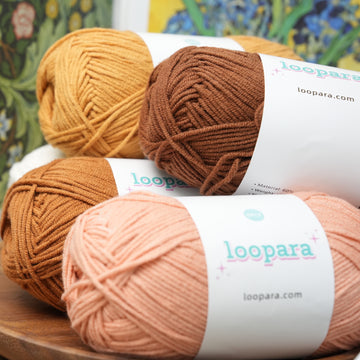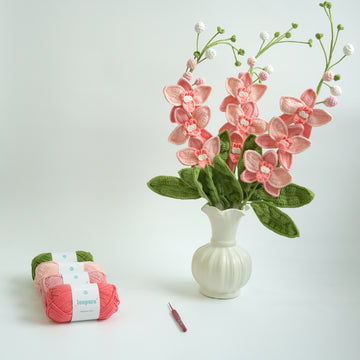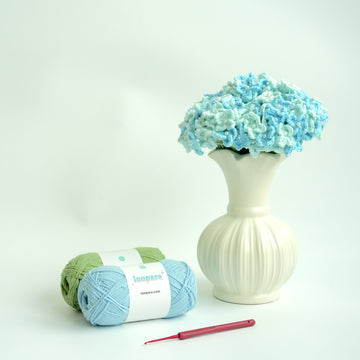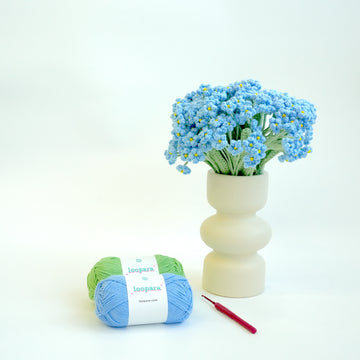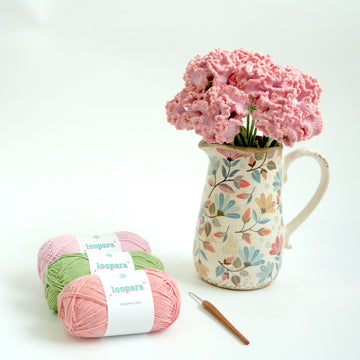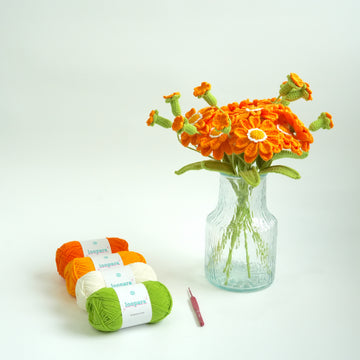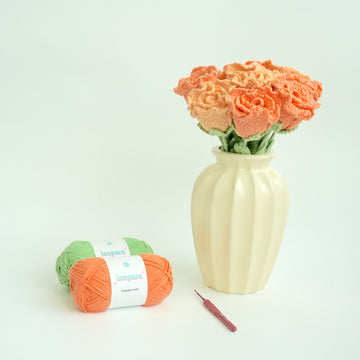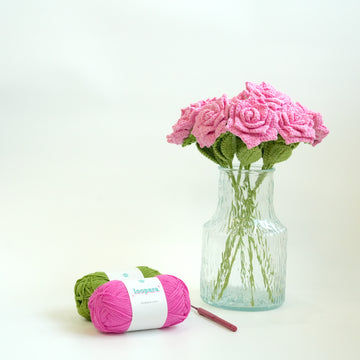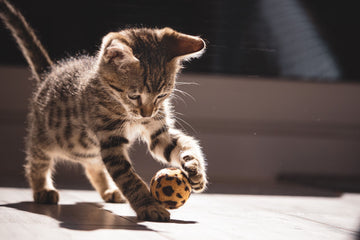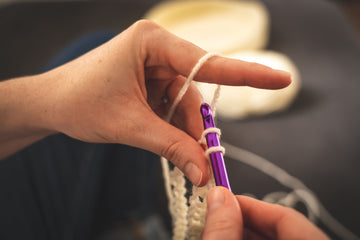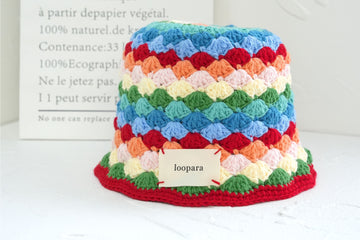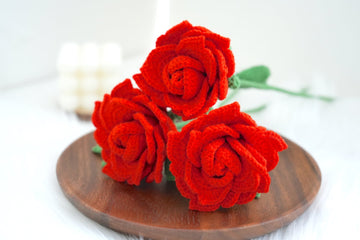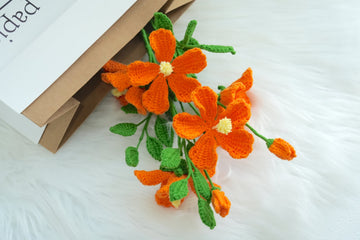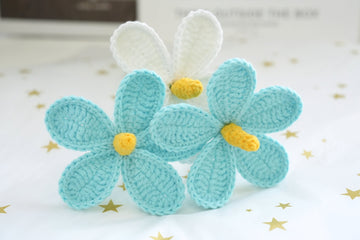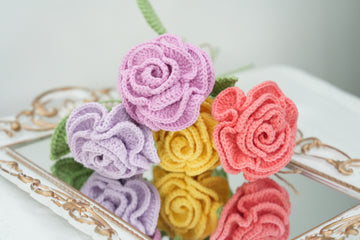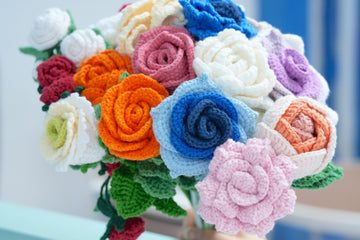Comfortable following a crochet pattern? Want to create your own bespoke designs? Then you’ve come to the right place to take the next step on your crocheting journey!
We’re going to take you through how to design crochet patterns, step-by-step. And we’ll offer some hints and tips to make sure they work the way you want them to.
Are you ready to design your own crochet pattern?
Some people are lucky enough to have a natural affinity for crochet. They can produce their own designs without working from a pattern. But they’d like to share those designs with other people – and perhaps get paid for them too.
Others are already comfortable using other people’s patterns. They might find themselves thinking through how they could change them to get different effects. And they may already have adapted patters to do just that.
If either of those descriptions sound like you, you’re ready to start designing your own patterns! And don’t worry if you’re not sure. We’ll give you some tips on how to hone your technical skills before you get stuck in.
Step-by-step guide to designing your own crochet patterns
Step 1. Hone your technical skills
Writing a pattern that others can follow means you need to understand and interpret standard crocheting terms. But that doesn’t mean you have to know everything about everything!
Start with a simple project, like a granny square (the smaller crochet squares that are used in bigger projects, like blankets).
Choose your hook and yarn, and find something to make notes. Tech-savvy crocheters might want to use a phone or computer, but a notebook and pen work just as well.
Now make your granny square. Take notes on what you’re doing every step of the way.
When you’ve finished, look back at your notes and turn them into instructions you think anyone could follow..
When you’ve got as far as you can, compare your pattern to a published pattern for a granny square (or whatever else you were making). Ask yourself:
- Did you miss any steps? This is completely normal! You know what’s in your head, but not everything necessarily makes it onto the page. Make a note of what you’ve missed, so you can include it next time.
- Are your abbreviations the same as those in commercial patterns? Using standard abbreviations will allow people to follow your instructions easily. If you weren’t sure of any, or got some wrong, check out the Yarn Council’s guidance on crochet abbreviations.
- Did you make a mistake? Don’t sweat it! Mistakes are a natural part of the learning process. Make a note of any errors so you won’t repeat them.
Do this a few more times, using different stitches and patterns. They don’t need to be the most complicated things in the world. Your aim here is to get comfortable with translating the finished product into a pattern.
Now find some crocheting pals who can test out your patterns. Even the most careful designer won’t spot every issue with their own pattern. So feedback from people who’ll come to it with fresh eyes is invaluable.
When you’re confident you can produce a simple, accurate pattern, you’re ready to get creative!
Step 2. Find your inspiration
The point of creating your own crochet pattern is to design something that doesn’t exist already. That’s enormously exciting – but it can be daunting too!
If you have hundreds of ideas, that’s fantastic. But don’t worry if you don’t. You can find inspiration from pretty much anything. So keep a notebook handy, and jot down ideas as they come to you.
Possible sources of inspiration include:
- A pattern you’ve seen or worked on. How could you give it a fresh look?
- A new crochet yarn. If you’ve seen a yarn you love, how could you use it?
- Garments or homeware. Are there items in your wardrobe you’d love to see in crocheted form? What about accessories or interior decorations?
- Is there a painting you love? Could you use its colors or motifs in your crochet?
- The natural world is full of patterns and shapes. Flowers, leaves, clouds, seashells – any or all of them could inspire your crochet designs.
Don’t worry about using all your ideas at once. With some, you might be instantly inspired to start work on a pattern. Others might take longer to crystallize.
Step 3. Make a sketch
You don’t have to be Leonardo Da Vinci! But it’s a good idea to put something on paper that shows what you’re aiming to produce.
You might find you adapt your design when you start crocheting. That’s okay – it’s a normal part of the creative process. You can alter your as you go along sketch too.
The important thing is to get the idea out of your head so you can look at it whenever you want to. And if you find yourself getting bogged down, it’s a good way to refresh your vision for the project.
Step 4. Crochet your gauge swatch
Some people think gauge swatches are boring – but when it comes to pattern, they’re anything but. Think of them as the key to your whole design.
Gauge swatches allow you to try out different combinations of stitches, yarns and hook sizes. You’ll see how the fabric looks, feels and drapes. It’s a good idea to use lighter colored yarn when you’re starting out, so it’s easier to see the stitches.
If you make a gauge swatch that doesn’t quite work, don’t think of it as wasted effort. If you hadn’t tried it, you’d never have known! Instead, realise that you’ve learned something valuable on your way to creating the perfect design.
When you have a gauge swatch you’re happy with, it’s time for the next step.
Step 5. Calculate your stitches and rows
You need to know how many stitches and rows will make your finished item the right size. And to do that, you’ll need to decide on the finished measurements.
If you’re making clothing, use the Craft Yarn Council’s standard measurements. They’ll show you how to translate body measurements into clothing sizes.
If you’re making an object for the house, measure up something similar you already own.
Adding your measurements to your sketch is a good way of keeping track of all this information.
Now use your gauge swatch to calculate how many rows and stitches it will take to get to the right size. This takes some simple maths.
Divide the desired length of your item by the length of your swatch. Then multiply the answer by the number of rows in your swatch. That will give you the number of rows required for the complete pattern.
It’s the same for the width. Divide the width you want your item to be by the width of your swatch. Then multiply that by the number of stitches across your swatch.
For example, your gauge swatch is 10 cm long and 10cm wide. It’s 15 rows of double crochet high and 20 stitches wide.
You’re making a blanket you want to be 100 cm by 100 cm. To calculate the number of rows, you would do the following sums
100 (final length) / 10 (length of swatch) = 10
10 x 15 (number of rows in your swatch) = 150 rows
To calculate the number of stitches per row, you would do the following sums:
100 (final width) / 10 (width of swatch) = 10
10 x 20 (number of stitches in your swatch) = 200 stitches per row
Step 6. Crochet your item
Now it’s time to get started on the real thing! Make notes as you go, just as you did when you were making your practice items.
To get started, make a slip knot and chain the number of stitches you calculated for the width.
Stop now and again and measure your work, to check it’s consistent. And take the opportunity to see if everything’s on track. Are there any slipped stitches or other problems? If so, make a note and get frogging! Now’s the time to put things right.
Step 7. Write the pattern
When you’ve finished making the physical item, look back at your notes. You can now turn them into a full pattern.
The standard structure goes like this:
- Title and introduction – these explain what the pattern will produce
- Pattern notes – these will give an overview of the pattern (e.g. whether it’s worked in panels, in the round, or top-down) and how to read it (e.g. “work instructions in (parentheses) in the same stitch”)
- Skill level, materials, yarn quantities, measurements and gauge
- Pattern instructions
- Any extra diagrams or photos
Note that you don’t necessarily have to write everything in the same order! You may find it easiest to start with the pattern instructions, while everything is fresh in your mind. You can then go back and add the notes and extra information.
Step 8. Test your pattern
Last but not least, test your pattern to see if it works!
If you’re testing the pattern yourself, give yourself a break after writing it. That will help ensure you’re following what’s printed on the page, rather than what you think is there.
Even better, get some friends who crochet to use the pattern and report back on any problems.
How to design crochet patterns: quickfire summary
Designing crochet patterns can be great fun, but like any other skill, it needs some practice. Start off simple, and take it slow.
Making a gauge swatch will make your life much easier. Take plenty of notes as you work on your item. And when you’ve finished your pattern, get others to test it out to check it works.
Enjoy sharing your new designs with the world!


